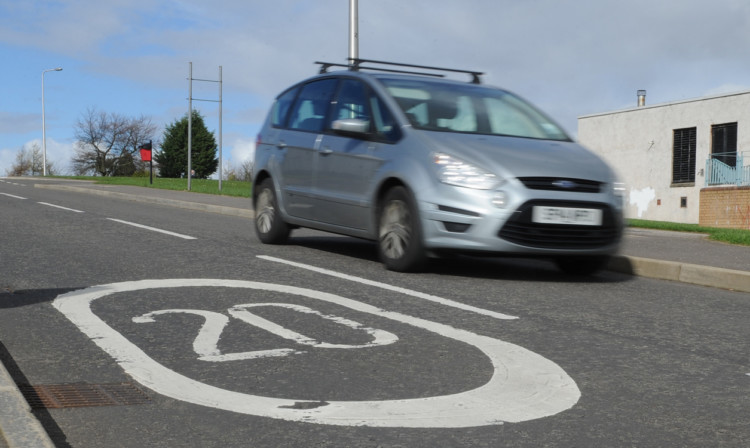A motion calling for 20mph zones to be introduced on residential streets across Dundee is to be lodged by a senior councillor.
Fraser Macpherson reckons cutting traffic speeds would improve safety and reduce the cost of repairing wear and tear on roads. He is planning to bring forward a motion to the city development committee.
Yesterday he accused the city council of “dragging its feet” on the issue when other local authorities had already taken action.
Edinburgh has piloted a scheme covering 25 miles of streets on the south side of the city and is now looking to extend this to all residential and shopping roads.
Mr Macpherson said: “Edinburgh Council has rightly decided that, in highly residential areas, 20mph zones are the way forward.
“This is largely on road safety grounds and I have long supported lower speed limits in highly residential streets particularly where there are elderly residents or children.
“Dundee City Council’s administration has been very slow to embrace the strong public support for 20’s Plenty in Dundee.
“It’s very starkly different to the proactive approach of other councils. A number of our neighbours, Fife and Angus for example, have been proactive.
“Just look at the Angus/Dundee boundary at Monifieth. Navarre Street and East Navarre Street are both highly residential 20mph on the Angus side, 30mph on the Dundee side.
“And it need not be expensive advisory signage and some road marking I am wholly against expensive engineering measures like speed bumps.”
The councillor said traffic calming would be especially valuable in narrow streets, such as the lanes off Perth Road or on the Logie estate in his West End ward.
There are some 20mph zones in Dundee.
The list includes Gowrie Park, which has one of the link roads to Ninewells Hospital, Lothian Crescent, the £2.6 million “spine road” built to improve east-west connections through Whitfield, and South Victoria Dock Road at the harbour.
There are also part-time 20mph limits around all city schools when pupils are arriving and leaving.
Mr Macpherson has been in touch with council officers several times in recent years in an effort to encourage more speed limit cuts.
A letter he received from transportation head Neil Gellatly explained that policy was to prioritise pedestrian accident injury sites for analysis and treatment prior to any consideration of further 20mph sites.
“This policy essentially targets the council’s limited resources to locations where injury accident are occurring rather than installing traffic calming on roads where there is no injury accident history.”
Scottish Government guidance suggested expensive engineering works would be needed to provide traffic calming that would be self-enforcing and would not require additional police enforcement.
“On a city-wide basis the introduction of 20mph limits would likely run into millions of pounds and in some areas it would provide little benefit in injury accident reduction as accident levels are already low,” Mr Gellatly said.
He gave Lothian Crescent as an example of the council being willing to introduce lower speed limits where appropriate.
“However, it is has been Dundee City Council’s policy for nearly 10 years not to implement signed-only 20mph speed limits as there is evidence that these schemes typically reduce speeds by between one and two miles per hour as the streets already have relatively low traffic speeds,” he said.
